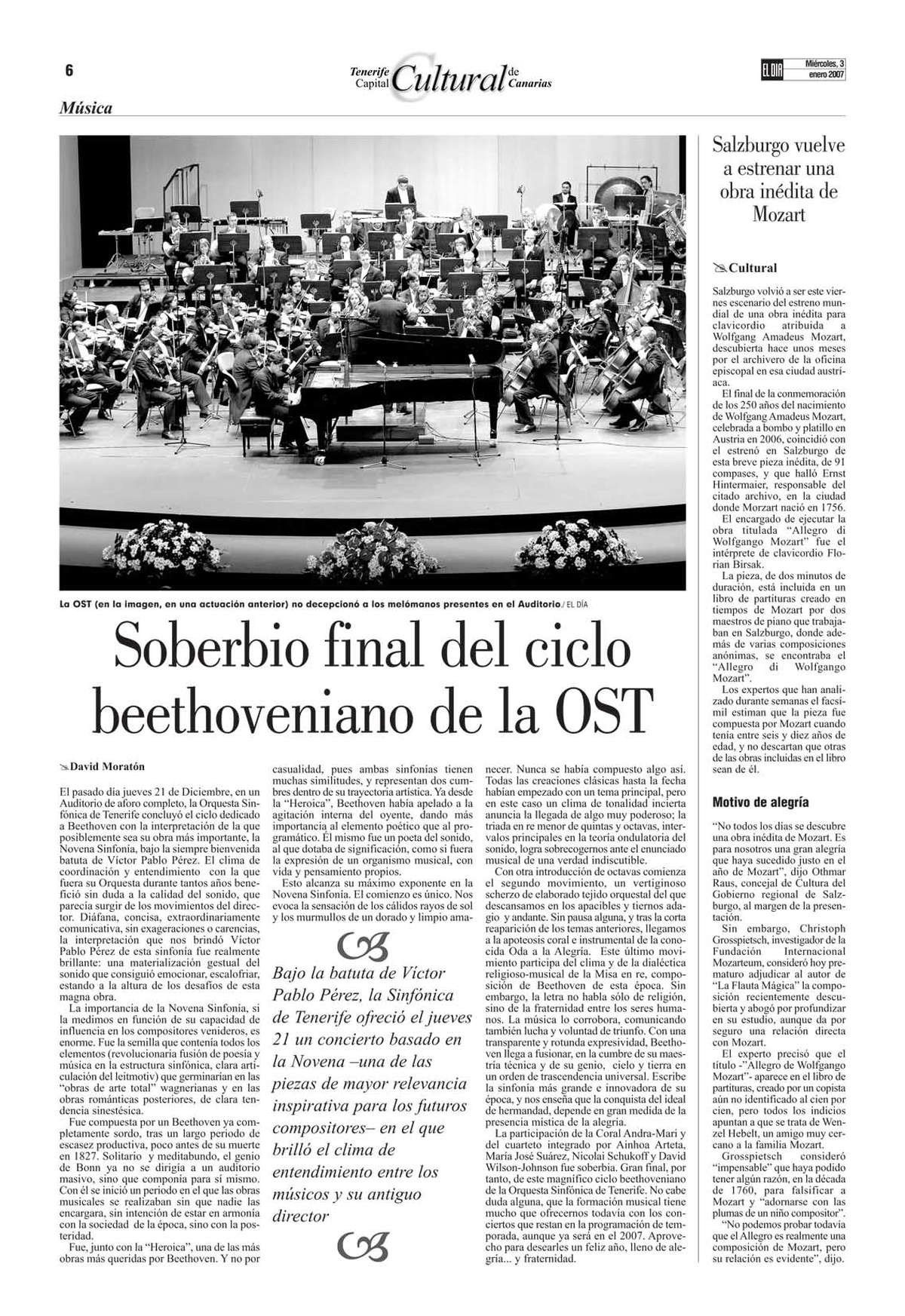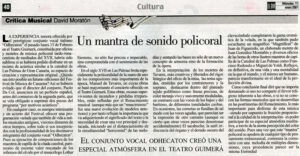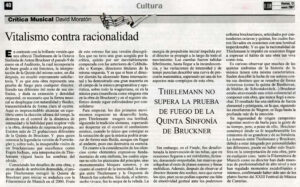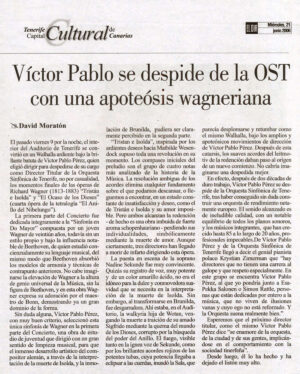Superb Finale of the OST Beethovenian Cycle
By David Moratón
The OST (in the image, in a previous performance) did not disappoint the music lovers present at the Auditorium
Last Thursday, December 21st, in a complex but complete Auditorium, the Tenerife Symphony Orchestra concluded the cycle dedicated to Beethoven with the interpretation of the Ninth Symphony, under the always welcome baton of Víctor Pablo Pérez, with the coordination and rendering with which Tenerife’s musical life has been guided in recent years.
It seemed to emerge from the movements of the director, Dídimo, concise, extraordinarily communicative, in spontaneous exaggerations and stridencies, the interpretation of a brilliant Victor: a gestural materialization of the sound that the musicians demonstrated, being at the height of the challenges of this magnificent work.
The importance of the Ninth Symphony, and its enormous influence on the musical development of the nineteenth century, is enormous. It was the seed that contained all the elements that would later flourish in the symphonic structure itself, with articulated sentences forming the romantic works that immediately followed from the nineteenth century.
It was composed by Beethoven as a completely lonely and deaf work, after the “Missa Solemnis” of 1827. Solitary and disillusioned, the genius of Bonn was no longer the same optimistic figure that would have composed for himself. With this work, he intended to provide a final period to the concert hall, trying to get along with the intention of being in harmony with the society of the time, but with the possibility.
He also composed the “Heroica,” one of the most beloved works by Beethoven. Never had something so great been composed. Today everything, except perhaps the conclusions up to the date they had started with a main theme, but never had the general sense of the work been so perfect and mysterious: it dealt with the rhythm of the material itself, until the final moment of the work.
With a magnificent introduction of octaves beginning in the second movement, an exceptional musical work, we descend into the most appealing and numerous aspects of the gradual and transparent expressiveness, Beethoven uses a technique of his genius, heaven and earth in the universal framework of the work. Writing during a magnificent time, and it teaches us that the conquest of the ideal of human happiness depends on the musical, demonstrative allegory of the musical presence of joy.
With this magnificent introduction of octaves beginning in the second movement, we can rest on the most appealing and numerous aspects of the gradual and transparent expressiveness, Beethoven uses a technique of his genius, earth and heaven in the universal framework of the work. Musical writing during a magnificent time, and it teaches us that the conquest of the ideal of human happiness depends on the musical, demonstrative allegory of the musical presence of joy.
The excellent direction of John Nelson, André-Mary and José Miró, Jesús Ariel, María José Suárez, Nicolau Scheloff and David Wilson-Johnson interpreted a magnificent final, both of this magnificent beethovenian cycle of the Tenerife Symphony Orchestra. We don’t know much that we still offer today with these concerts that we have in the temples, separated, although it will be in 2007. We take advantage of the opportunities to discover a happy child, full of joy… and fraternity.
Under the baton of Víctor Pablo Pérez, the Tenerife Symphony Orchestra offered on Thursday the 21st a concert based on the Ninth -one of the pieces of greatest referential inspiration for future composers- in which the climate of understanding between the artists and their old director shone
The casualty, since both symphonies have many similarities, and represent the mastery of the revolutionary moment that we are experiencing now. Never had something been composed so great. Today everything, except perhaps the conclusions up to the date they had started with a main theme, but never had it been so perfect and mysterious: it dealt with the rhythm of the material itself, until the final moment of the work, and not something so fascinating as the ideal of human happiness, and that their most important works reflect their precisionism, their chaos, and absence of resignation.
The Third Symphony concludes with well-known variations that are promising and by no means by chance, since Beethoven, like Prometheus, defended with obstinate sincerity, like none of his contemporaries, the power of being human to govern his own destiny.
El Dia, Tenerife, Spain
3 January
2007






Reviews
There are no reviews yet.